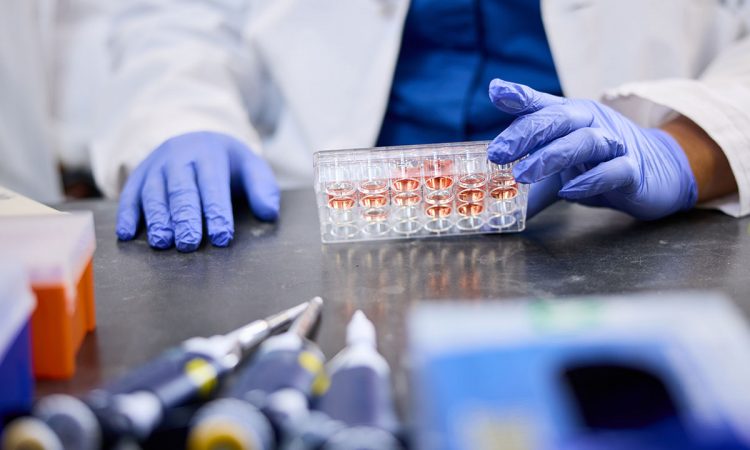Researchers at Washington University School of Medicine in St. Louis have received a grant from the National Institutes of Health (NIH) to support training and mentorship for early-career physician-scientists. This relatively new funding opportunity — called Stimulating Access to Research During Residency (StARR) — will provide support for early-career physicians pursuing careers in cancer research.
According to the NIH, the StARR program aims to address the declining number of clinician-scientists, who play a critical role in the advancement of medicine. Further, women and individuals from underrepresented racial and ethnic groups conduct a small proportion of NIH-funded physician-scientist research. The grant aims to provide support that helps address these disparities.
In collaboration with the NIH’s National Cancer Institute, the Washington University program is structured so that resident physicians can participate in oncological research for one to two years during their training. To participate in the program, residents must show a commitment to cross-disciplinary research in oncology.
“This multidisciplinary program is important because most training grants stay within a specific department and therefore limit the kinds of questions that can be addressed,” said Washington University StARR principal investigator Ryan C. Fields, MD, who treats patients at Siteman Cancer Center at Barnes-Jewish Hospital and Washington University School of Medicine, and is the Kim & Tim Eberlein Distinguished Professor of Surgical Oncology. “To participate in the new program, each trainee must have two mentors in different fields. We made that requirement to inspire cross-disciplinary research. That’s really the name of the game in cancer research these days. It teaches the trainees how to collaborate, how to work in teams and how to work with different mentors.”
The participating departments include internal medicine, surgery, radiation oncology, pathology, immunology and neurosurgery, but the program has provisions for possible collaboration outside of these disciplines.
Retention of clinicians in research is an integral part of bridging the bedside-to-bench gap, according to Fields, who is also chief of the Section of Surgical Oncology. While treating patients, physicians may identify a need that could be addressed rigorously through research. Physician-scientists are uniquely placed to recognize such needs, and the new program can give them the tools necessary to design studies to address clinical questions that arise in their medical practices.
“This program will help cultivate strong support for those seeking to combine patient care and research into their career paths,” said Wayne M. Yokoyama, MD, the Sam J. Levin and Audrey Loew Levin Professor of Arthritis Research, director of the Division of Physician-Scientists at Washington University School of Medicine, and an associate dean. “The support and mentorship provided by this training program will help secure a continuous pipeline of talented physician-scientists who will be well positioned to lead innovative research and patient care for generations to come.”
There are numerous reasons why the number of physician-scientists has declined in recent years. Among the reasons physicians have exited the field are a lack of funding and student loan responsibilities. In addition, many physicians are not aware of research positions, but rather see a singular career path in medicine focused on patient care.
This grant aims to alleviate some of the stressors of a physician-scientist career by providing financial support and mentorship from others who have navigated this type of career path. While many research grants are geared toward those with research-focused degrees, StARR provides flexibility and support for those with medical degrees, alone or alongside other doctoral degrees. The goals of the program center around identifying, recruiting, training, retaining and advancing physicians with a strong interest in developing research programs in conjunction with their clinical duties.
“I look at my role as a steward of this grant for the institution,” Fields said. “In that regard, I’m most excited about using it as a catalyst for new research projects in which mentors from different departments come together because there’s a trainee interested in investigating something new. That spurs innovation and collaboration, and we will see brilliant young minds thrive because of that process. I think it’s going to catalyze a lot of great science.”
For more information, including eligibility and how to apply, please visit this website.
Source: Read Full Article
